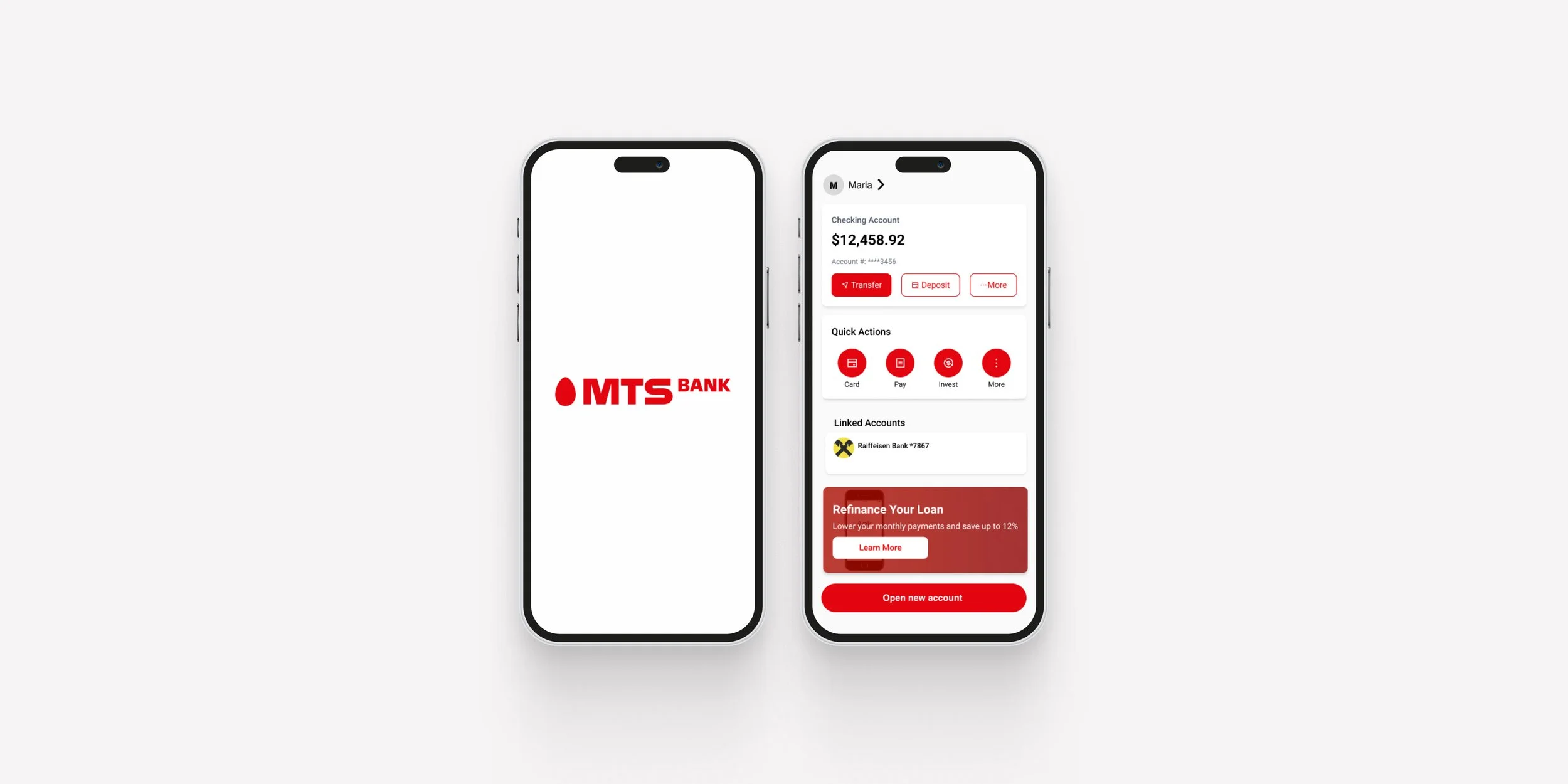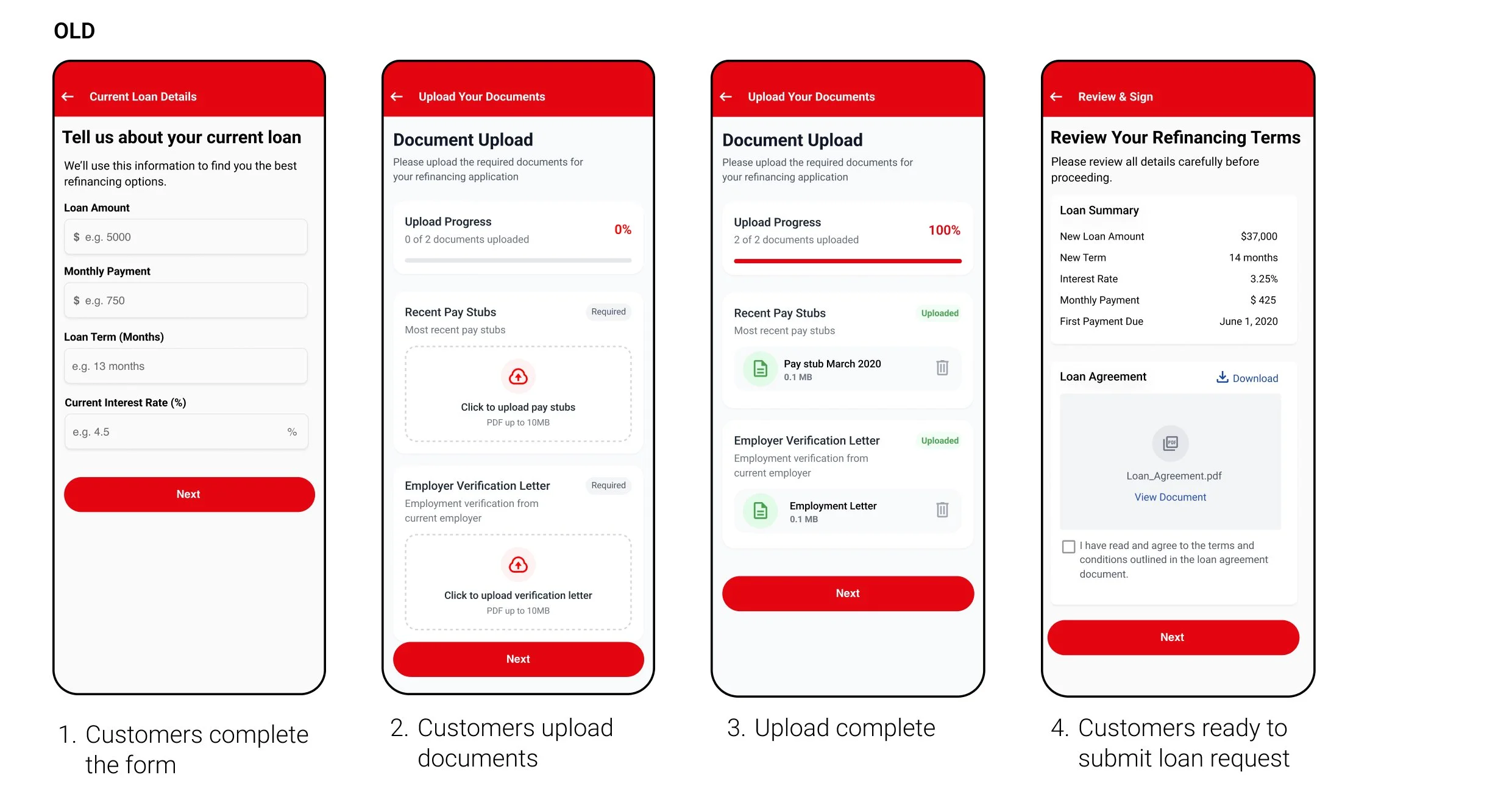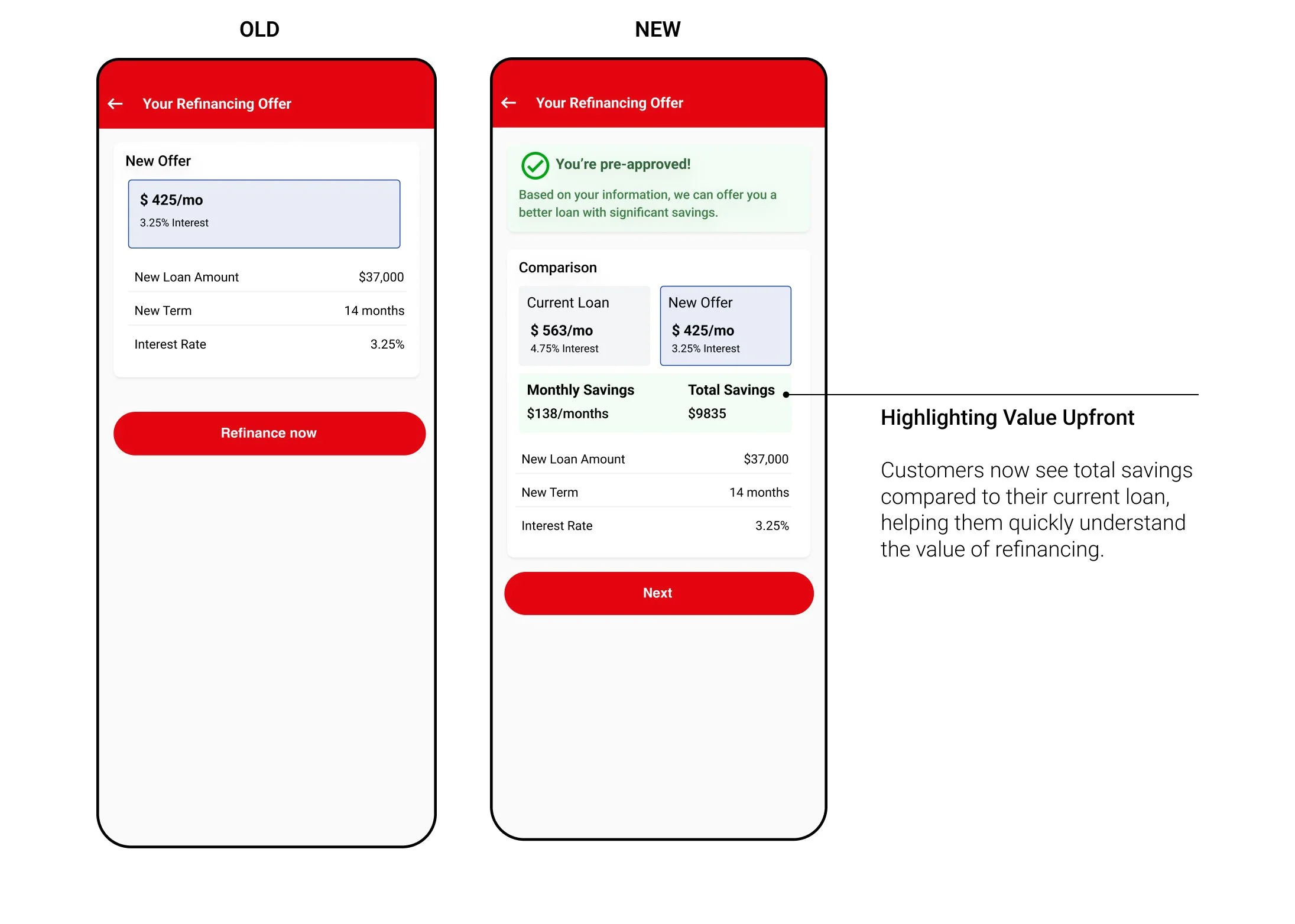MTS Bank | B2C
Redesigned Refinance Experience to Help More Borrowers Save
MY ROLE: UX Designer
COLLABORATION: Design Lead, PM, Engineers (2)
TIMELINE: 10 weeks
LAUNCH: June 2020
MTS Bank wanted to improve the loan refinancing flow in its mobile app, which serves 3.8 million users. As a UX/UI Intern, I helped redesign the experience for a feature that many people were dropping midway.
We focused on three key improvements:
Made loan offers easier to compare
Let eligible customers skip unnecessary document uploads
Added in-app signing for required documents
PROBLEM
Many customers were leaving the refinancing flow before they even saw their loan options. When customers exited this early, the bank couldn’t show them a lower rate or help them save money, which meant missed opportunities to strengthen customer loyalty and grow long-term relationships.
BUSSINESS GOAL
Increase conversion rates by reducing drop-offs in the refinancing flow through clearer labels and improved information, helping more users reach the rate comparison screen and complete the process.
FOCUS
This case study focuses on customers who get their salary paid directly into their bank account.
Project Kick-Off
Because of early COVID-19 restrictions, we had limited access to real users. To move forward, we relied on internal resources and secondary research:
Looked at product analytics to see where customers dropped out of the refinancing flow
Reviewed common support questions to uncover pain points and missing details
Explored other banking apps to identify best practices and UX patterns for mobile refinancing
With the PM, we identified the main challenges for customers
1. Feature awareness
Many customers didn’t understand how refinancing worked or why it was useful - they didn’t engage with it.
2. Friction in early steps
Many customers dropped off during eligibility checks and document uploads, making it hard to complete the process.
3.Unclear next steps
Customers were unsure about eligibility rules and what to do next, which caused hesitation to proceed.
DESIGN
After spotting where customers dropped off and what caused frustration, I explored designs that improved transparency, built trust, and reduced friction. Mapping the user journey revealed clear opportunities for improvement.
The first goal was to explain refinancing benefits and loan terms in a simple way. Without this clarity, users didn’t see the value and often abandoned the process.
Next, I focused on making the process easier for direct deposit customers. Because they were already verified, they could skip steps such as uploading documents.
Finally, I focused on helping customers see the value of refinancing right away. By showing a direct comparison between their current loan and the new offer, I made potential savings clear and easy to understand. This gave customers the confidence to move forward, since they could see exactly how much money they would save.
FINAL DESIGNS
Reflection & Impact
In this project, collaboration across teams was key. Partnering with the product helped uncover the biggest friction points in the flow. Working with legal and marketing allowed us to simplify requirements and shape messaging that built trust without adding extra steps.
The outcome was more than just a smoother experience; it drove measurable business impact. Refinancing completions rose from 14,000 to over 17,000 in the first month. For me, the takeaway was clear: when design connects user needs with business priorities and aligns multiple teams, it can unlock both simplicity and growth.





